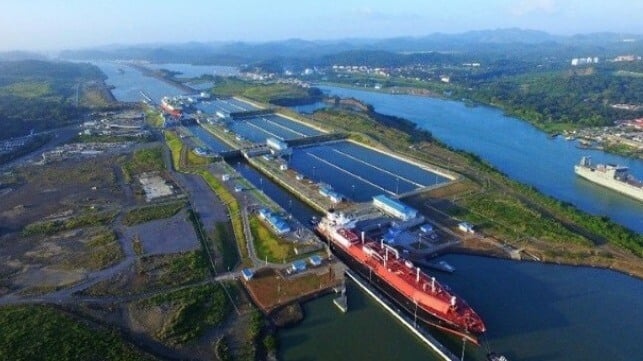Trump Refuses to Rule Out Use of Force to Take Over Greenland and Panama

At a press conference Tuesday, U.S. President-elect Donald Trump said that he could not rule out using military force to take control of Panama and Greenland. Trump has insisted that America may need both for its strategic purposes, despite local opposition.
On Tuesday, when asked if he could assure the rest of the world that he would not use economic or military coercion to pursue these acquisitions, Trump said that he needed to keep his options open.
"You're talking about Panama and Greenland. No, I can't assure you on either of those two. But I can say this: we need them for economic security," Trump said. "I'm not gonna commit to [ruling out coercion] now. It might be that you'll have to do something."
The original Panama Canal was built by the United States government in 1903-14, and it was under American military control until the 1990s. Today, the canal is operated by the Autoridad del Canal de Panama (ACP), a Panamanian government agency. To augment the original American-built canal, ACP constructed the larger New Panama Canal lock system in 2016, revolutionizing freight transport between the Atlantic and Pacific.
Trump has accused the ACP of charging inflated rates to American vessels, and has claimed that "Chinese" forces now operate the canal. ACP has not responded to these claims directly, but Panamanian president José Raúl Mulino has defended his country's sovereignty over the waterway and the structure of its transit pricing scheme.
Trump's interest in Greenland traces back to his first administration, when he expressed interest in buying the world's largest island from Denmark. He is at least the third U.S. president to contemplate making an unsolicited offer, after Harry S. Truman and Andrew Johnson: Greenland is well-located for military influence over the North Atlantic, the Arctic and the Northwest Passage, and it is a buffer between the U.S. East Coast and Russia, the main strategic competitor in the region.
Greenland plays a role in American defense planning and has hosted American troops since the Second World War. In 1951, the U.S. signed a treaty with Denmark that allows American forces to set up military bases in Greenland and transfer units freely about the island, without any land movement restrictions, compulsory pilotage, harbor dues or flight restrictions. One key American base - Pituffik Space Base, formerly Thule Air Base - remains in operation today.
Greenland also has strategic potential as a resource provider. It is home to untapped reserves of oil, gas and critical minerals, including the rare earth elements needed for new energy technologies. Several prospects have been identified in ice-free southern Greenland, and more potential acreage for exploration may open up as the island's coastal glaciers recede.
